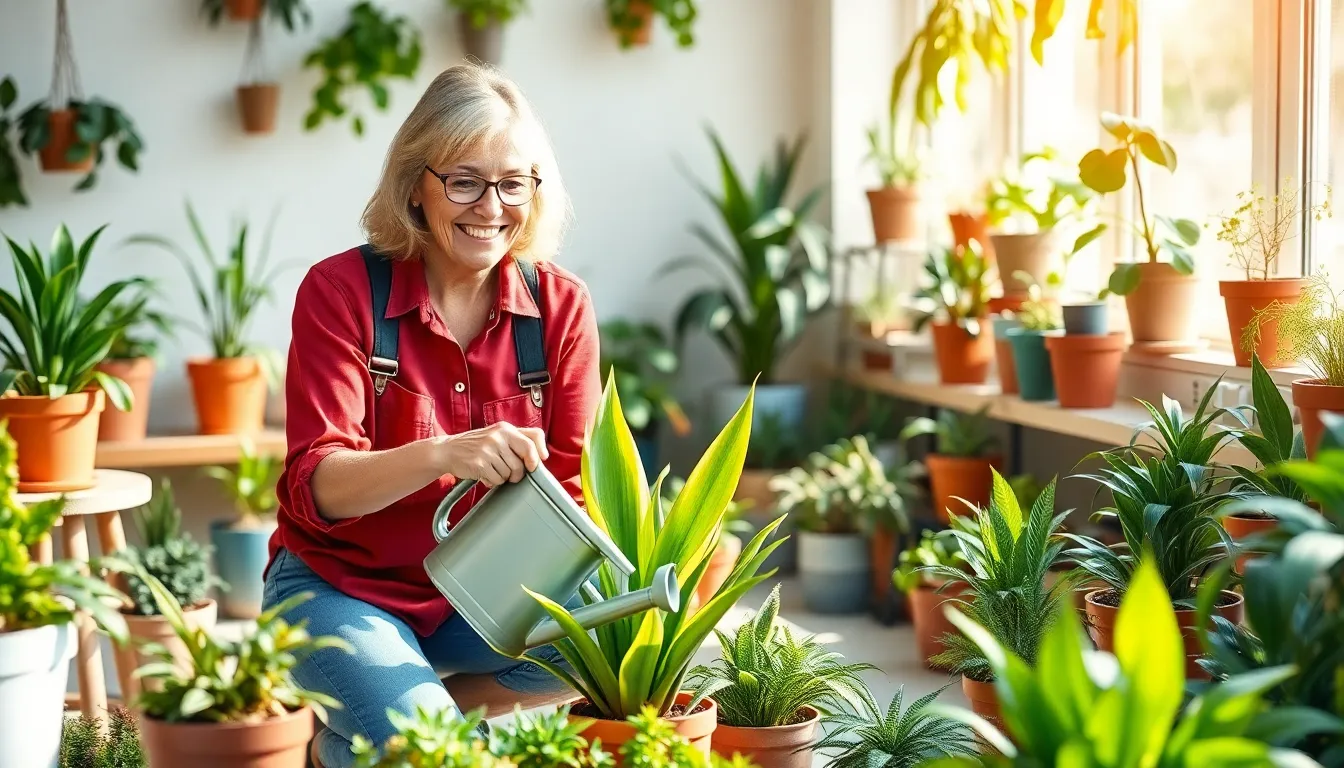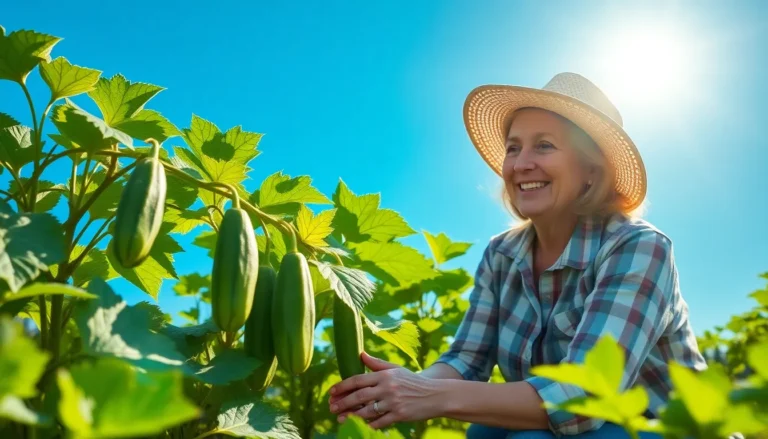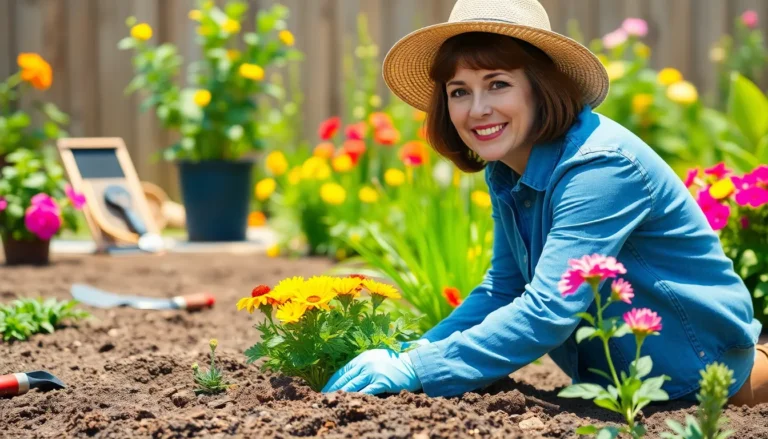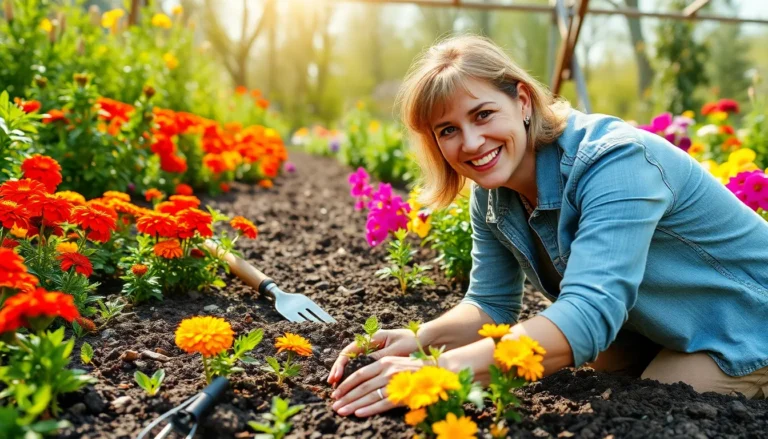Imagine transforming your home into a lush oasis, where the air is fresher and the vibe is just a little more zen. Indoor gardening isn’t just for the green thumbs; it’s for anyone who’s ever thought, “I can’t keep a cactus alive!” With a few simple tips, even the most plant-challenged can cultivate a thriving indoor garden that’ll make neighbors green with envy.
Indoor Gardening Tips
Indoor gardening offers multiple advantages beyond aesthetics. Growing plants indoors helps enhance overall well-being and improve living environments.
Improved Air Quality
Indoor plants significantly contribute to air purification. They absorb carbon dioxide and release oxygen, promoting a healthier atmosphere. Specific species, like peace lilies and spider plants, efficiently remove toxins such as formaldehyde and benzene. Studies indicate that having just a few plants can reduce airborne pollutants by up to 50%. Maintaining clean air results in better respiratory health and provides a refreshing feel throughout spaces.
Stress Relief
Gardening activities induce relaxation and alleviate stress. Engaging with plants encourages mindfulness, helping individuals focus on the present moment. Research shows that spending time with greenery can reduce cortisol levels, which are associated with stress. Creating an indoor garden also fosters a sense of accomplishment. Observing growth and nurturing plants instills joy, making it easier to unwind in busy lifestyles.
Essential Indoor Gardening Tools
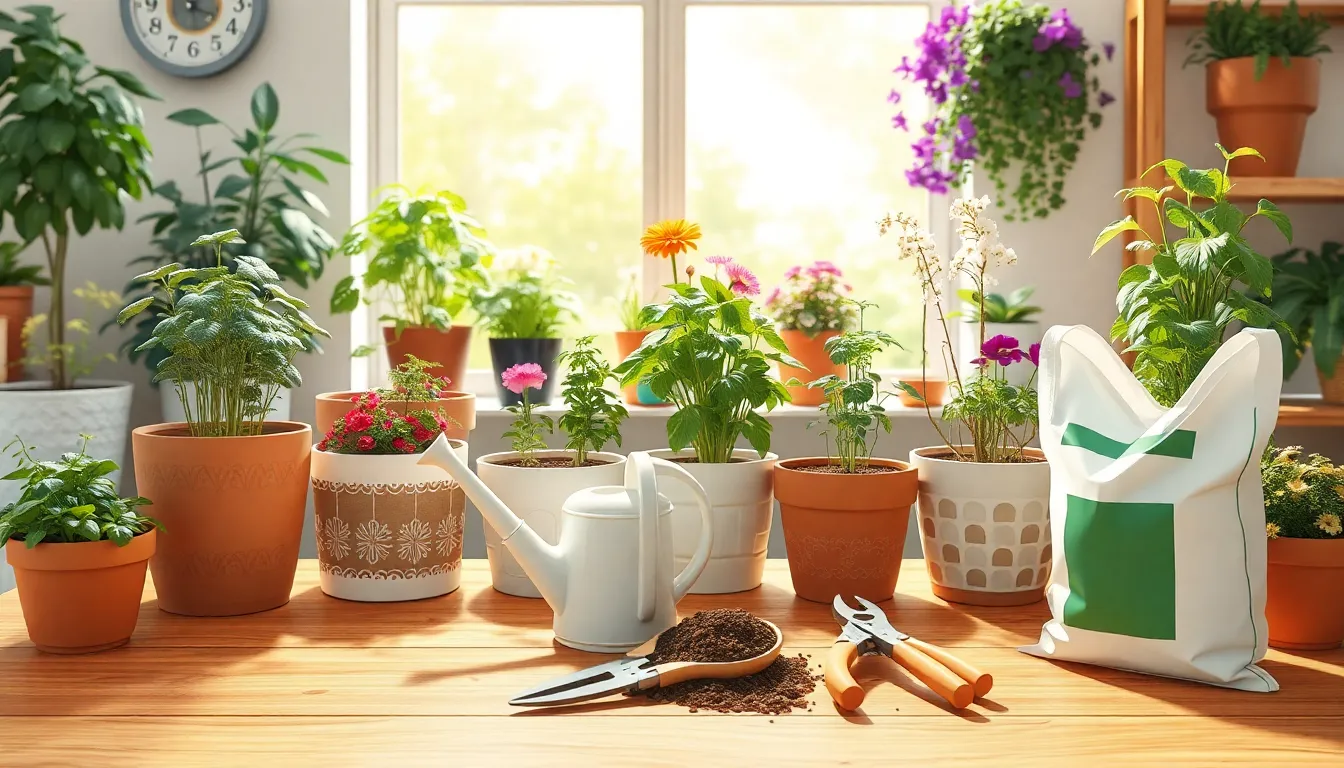
Indoor gardening requires specific tools for optimal results. Having the right equipment simplifies the process and promotes healthier plants.
Basic Tools List
- Containers: Choose pots with drainage holes for proper water management.
- Potting Soil: Use high-quality soil that retains moisture and supports plant growth.
- Watering Can: Select a can with a narrow spout for targeted watering.
- Pruning Shears: Invest in sharp shears for clean cuts, encouraging growth.
- Gardening Gloves: Protect hands with durable gloves to ensure safety and comfort.
Optional Tools For Enthusiasts
- Grow Lights: Supplement natural light with LED grow lights, benefiting plant development in low-light areas.
- Humidity Meters: Measure indoor humidity levels more accurately for optimal moisture control.
- Soil Moisture Meter: Monitor soil moisture levels, preventing over- or under-watering effectively.
- Fertilizer: Use organic fertilizer to enhance nutrient content and promote vigorous growth.
- Seedling Heat Mat: Provide extra warmth for seedlings, boosting germination success rates.
Choosing The Right Plants
Selecting suitable plants is crucial for indoor gardening success. Knowing light conditions in your space helps in making informed choices.
Low-Light Plants
Low-light plants thrive in minimal sunlight. Snake plants provide air purification and require little maintenance. Pothos, with its trailing vines, adapts well to various conditions and improves indoor air quality. ZZ plants tolerate neglect and have glossy leaves that brighten any room. Additionally, cast iron plants are nearly indestructible, making them ideal for beginners. Options like these enhance indoor gardening with vibrant greenery, even in spaces with inadequate sunlight.
High-Light Plants
High-light plants need bright sunlight for optimal growth. Succulents excel in bright, sunny spots while storing water in their leaves. Spider plants produce offshoots, thriving in strong light and adding a dynamic touch. Fiddle leaf figs bring bold aesthetics, contributing to a striking decor element. Additionally, citrus trees like lemons enjoy sunlight and yield fragrant fruit indoors. Selecting these plants fosters a lively environment, promoting a vibrant and flourishing indoor garden.
Indoor Gardening Techniques
Indoor gardening techniques play a vital role in nurturing plants effectively. Successful growth relies heavily on selecting suitable methods.
Soil Selection
Soil selection significantly impacts plant health. Choose high-quality potting soil designed for indoor plants. This type maintains moisture while providing essential nutrients. Consider soil amendments like perlite or vermiculite to enhance drainage. Additionally, check for pH levels; most indoor plants thrive in neutral to slightly acidic soil with a pH of 6 to 7. Avoid using garden soil, as it may contain pests or diseases harmful to indoor plants.
Watering Tips
Watering tips can make or break an indoor garden. Water when the top inch of soil feels dry to the touch for optimal moisture levels. Use a narrow-spouted watering can for precision and avoid waterlogged soil, which can lead to root rot. Consider using room-temperature water; it helps plants absorb moisture better. Adjust frequency based on the season; more frequent watering occurs in warmer months while reducing in colder periods. Ensure pots have drainage holes to prevent excess water build-up, allowing roots to breathe properly.
Common Indoor Gardening Mistakes
Indoor gardeners often make mistakes that hinder plant growth. Awareness of these common pitfalls enhances the gardening experience.
Overwatering
Overwatering represents a frequent issue for many indoor gardeners. Plants suffer from root rot when excessively watered, leading to decay and ultimately death. Checking soil moisture before watering helps maintain proper hydration levels. Emptying excess water from drainage trays prevents stagnant water, further reducing the risk of root issues. Adjusting watering schedules based on the season ensures plants receive appropriate moisture. Consistency with watering habits promotes healthier root systems, allowing plants to thrive.
Poor Light Conditions
Poor light conditions derail indoor gardening efforts. Insufficient light results in leggy, weak plants unable to grow robustly. Assessing natural light in each room helps determine plant placement to maximize exposure. Utilizing grow lights offers a solution for areas lacking sufficient sunlight. Different plant species require various light levels, so matching plants to the right light conditions supports healthy growth. Regularly rotating plants ensures even exposure to light on all sides, preventing uneven growth.
Conclusion
Embracing indoor gardening can transform any living space into a vibrant oasis. With the right tools and plant selections anyone can cultivate a thriving indoor garden that enhances their home environment. By focusing on proper care techniques and avoiding common pitfalls gardeners can enjoy the numerous benefits that indoor plants provide.
Whether it’s the joy of nurturing a low-light snake plant or the challenge of a sun-loving succulent each plant offers a unique opportunity for growth. Engaging with these green companions not only beautifies the home but also contributes to overall well-being. With patience and dedication anyone can master the art of indoor gardening and reap the rewards of a flourishing indoor landscape.

